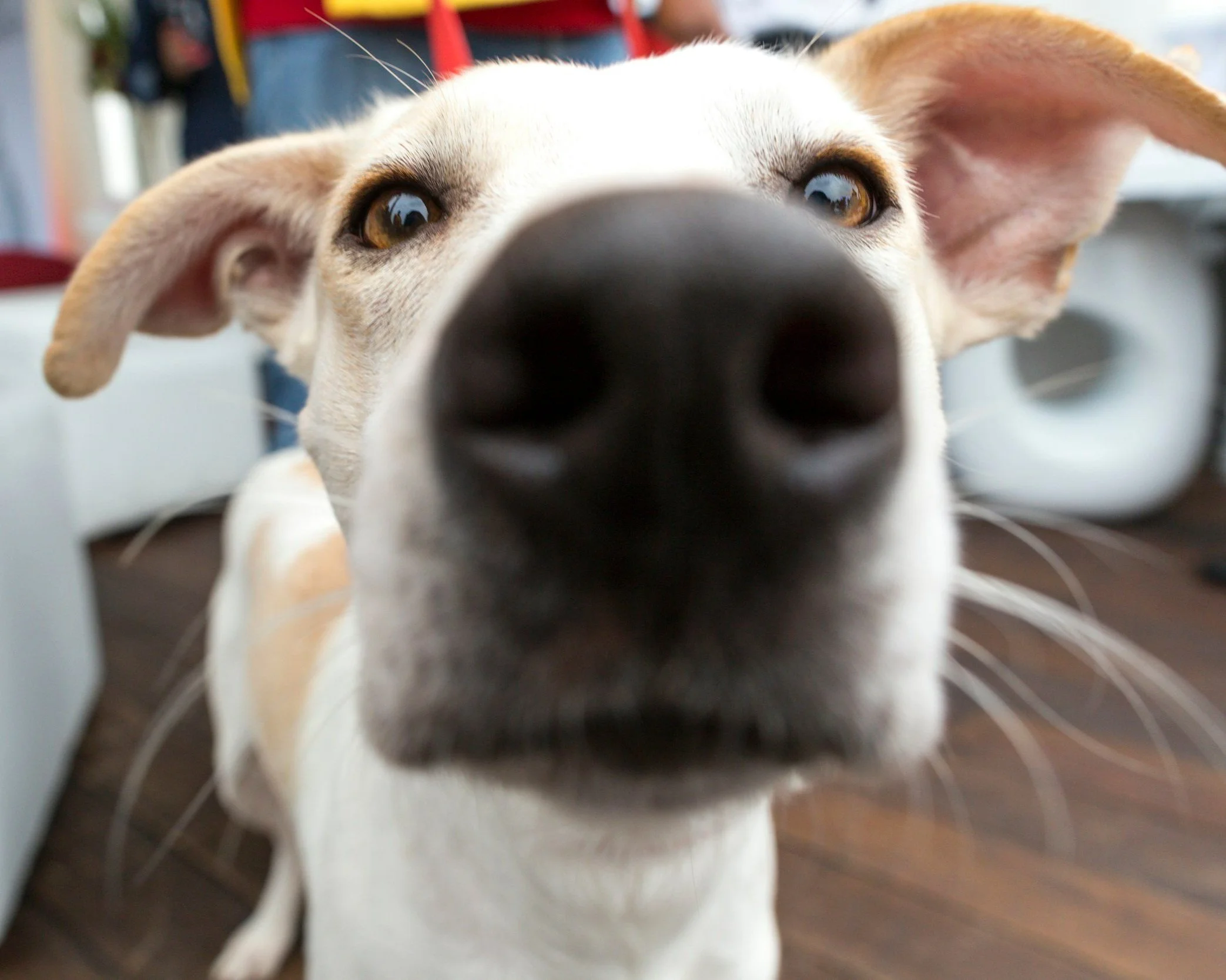Can a Nose Effect Behavior?
For a dog, it can!
Dogs have a fantastic sense of smell. Really fantastic. Scientists report that a dog's sense of smell is 10,000 to 100,000 times more acute than a human's. That's a big range, but WOW! The reason is that dogs have 50x the amount of scent receptors than humans.
Why does this matter? Is it so your dog can judge your body odor? Or your cooking skills? While your pup may watch you and silently judge, the reason we bring it up here is because of how it affects their BEHAVIOR!
You have probably heard of certain dog's having a "Prey Drive", or a HIGH prey drive. Actually ALL dogs follow the same Predatory Sequence. We'll talk about that sequence in more depth in future newsletters but the short story is that it consists of:
SEEK - Scanning, orienting, searching and SCENTING - finding the thing!
STALK - Eye watching (staring), marking, crawling, alerting - often a very still or slow moving phase
CHASE - GAME ON! This is the dopamine rush when your dog becomes fully engaged and their brain goes partially offline (you know when your dog "goes deaf"?)
GRAB BITE - Grabbing with their mouth to catch the object - It's a quick snatch out of the air, a grab off the floor, a soft crunch or even a pounce.
KILL BITE - Self-explanatory, but involves the solid shake or crunch. It's why squeaker toys have a certain satisfaction for some dogs.
DISSECT - Shred the thing that was caught! Think of that dog that pulls the stuffing out of the toy or shreds the tennis ball rather than bringing it back.
CONSUME - This has been bred out of "most" domestic dogs, but it can show up on occasion.
Different breeds have been altered at different stages, but we'll get into that later.
So, how does your dog's NOSE fit into all of this?
Their nose, and powerful sense of...scent...drives much of their behavior!
A scent hits their olfactory nerves. Their amygdala is activated and the dopamine starts flowing. This is EXCITING for a dog!!
If there is a low concentration of odor, half of your dog's brain gets activated. If there is a high concentration of odor, your dog's brain is FULLY activated.
As a dog "works" an odor (locates it, follows it, understands what it is) their frontal cortex is activated and they start to learn.
They locate the source and their entire reward system is activated.
This is driven by neurochemicals in the brain and it's why scent work can be such a powerful training tool. But, it's also why your dog can become what we call..."a jerk!!" and not listen when you think there is absolutely nothing around. They smell it and want to complete their predatory sequence while you just want to go for a calm walk!
But, if you can learn how YOUR dog needs to complete their predatory sequence so they can calm down and relax, you'll be much more effective.
It sounds cool doesn't it? There is so much more to this and we'll cover it in more depth in upcoming newsletters, but the thing to know for now is...your dog's brain is activated by so many smells in the world that you will never notice. This activates their brain and depending on their predation sequence (varies by breed, human intervention, genetics and training) their behavior will change quickly.
Here's the short version:
You wake up to the smell of your favorite food cooking - bacon? cookies? cake? potatoes? Your brain says "OMG! YUM! I'm suddenly hungry! I must eat [insert favorite food]."
If you can't get that food, you may become upset or short tempered and eat all kinds of other snacks until you feel satisfied.
If you continue to smell that food but can't have it, your mood changes. You may or may not be able to block the smell. You may not be able to think about ANYTHING else.
Now multiply that by 10,000 to 100,000 and you have your dog's "reactivity" or "prey drive"!
Let me know if that makes sense? Want to learn more? This is the kind of stuff we'll be covering in our Paws & Success Membership area to help you better understand your dog.
Casa Luna Canines is your partner in dog training, human learning. Join us to learn how to be your dog’s best friend using 100% pain and fear free methods. Imagine what it will feel like when your dog chooses to behave well around you, no matter where you are!



